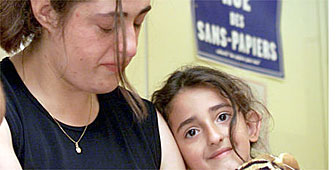Swiss government plans databank on asylum-seekers

The Swiss government is planning to set up a SFr20 million ($12.6 million) databank bank which would consolidate information on all asylum-seekers in the country. It is currently holding consultations on the plan.
The databank, known as “Etrangers 2000”, would provide the Federal Office for Refugees with information on the length of time spent by any asylum seeker in Switzerland, from the time of entry until departure. The system would replace the now-defunct Central Register for foreigners.
The databank would provide a uniform method of recording information, and would provide statistics for a variety of purposes. It would offer information, for instance, on religion and ethnic origin of asylum-seekers.
The government is expected to issue a decree allowing some officials discretion with respect to the recording and use of the data.
One of its priorities, the government says, is the protection of individuals’ privacy.
With respect to confidential information on the asylum seekers, the authorities will have to prove a need for the information and relevance to their work in order to gain access.
The information will be restricted, and authorities will consider both the role of the department which requests access, and the individual requesting information, authorities said.
Recently, a number of immigrants “without papers” or “Sans papiers” have occupied churches to demonstrate for the right to stay in Switzerland.
A group supporting undeclared workers said on Monday it planned to occupy churches in Zürich and Basel, but had not yet fixed a date. They planned to protest the government’s decision not to grant a general amnesty.
According to the federal government, Switzerland has had a massive increase in applications for asylum. In 1998, for instance, 41,302 persons filed asylum applications, an increase of 72 per cent compared with the year before. The total climbed again in 1999. The largest group of asylum seekers came originally from the Federal Republic of Yugoslavia (FRY), most of them from the province of Kosovo.
swissinfo with agencies

In compliance with the JTI standards
More: SWI swissinfo.ch certified by the Journalism Trust Initiative
You can find an overview of ongoing debates with our journalists here . Please join us!
If you want to start a conversation about a topic raised in this article or want to report factual errors, email us at english@swissinfo.ch.